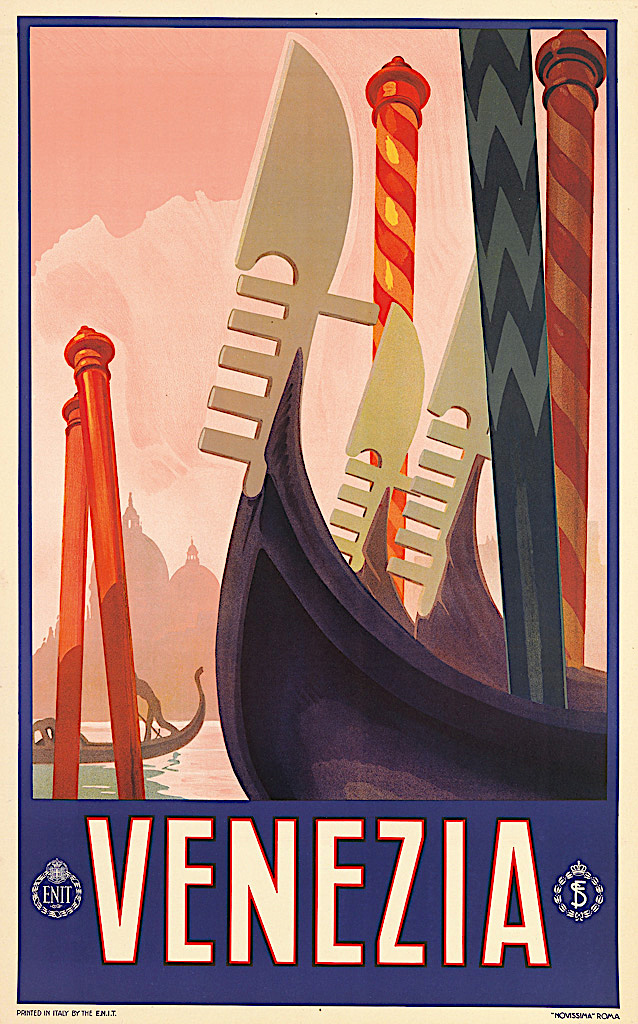MARIANI’S
Virtual
Gourmet
July 17, 2022
NEWSLETTER
IN THIS ISSUE
DINING OUT IN GALWAY
By John Mariani
NEW YORK CORNER
L'AVENUE AT SAKS
By John Mariani
ANOTHER VERMEER
CHAPTER 28
By John Mariani
❖❖❖
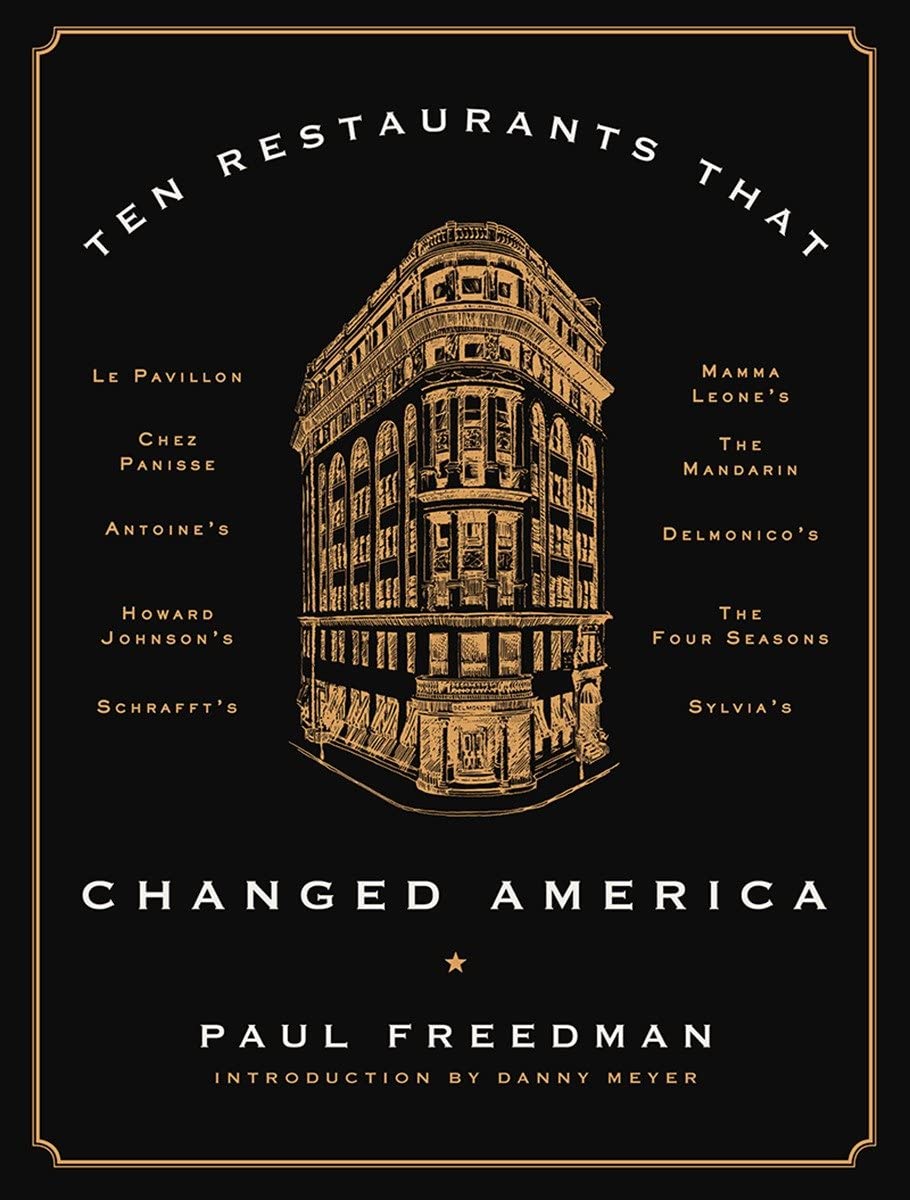 Paul Freedman on his book TEN
RESTAURANTS THAT CHANGED AMERICA. Go
to: WVOX.com.
The episode will also be archived at: almostgolden.
Paul Freedman on his book TEN
RESTAURANTS THAT CHANGED AMERICA. Go
to: WVOX.com.
The episode will also be archived at: almostgolden.
❖❖❖
DINING OUT IN GALWAY
By John Mariani
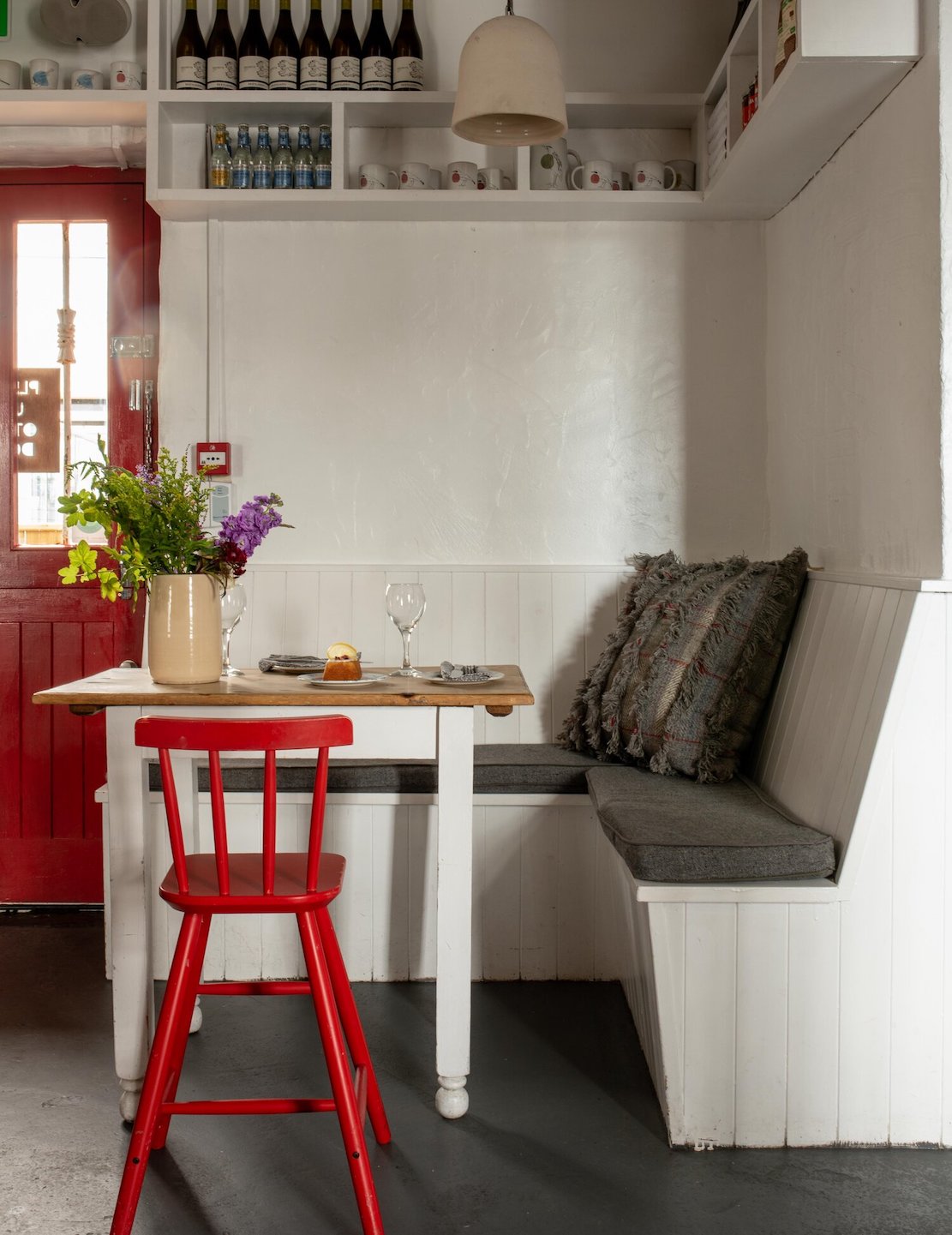
Ard Bia
One of the most
sentimental songs in the Irish repertoire, made
famous by Bing Crosby, is “Galway Bay,” which,
though written in 1947, paints a pretty, if
wholly rural, picture of a town where there are
“women in the 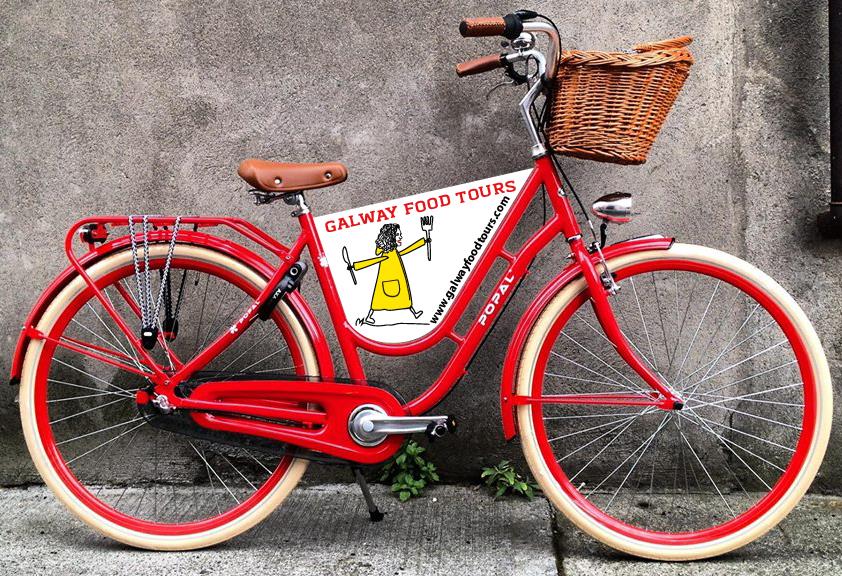 meadow
makin' hay” or “in the uplands diggin' praties.”
You won’t see any of those activities going on
these days in Galway City (though the county of
Galway is still quite rural), which has been a
trading port for centuries and is now the fourth
most populous city in the Republic of Ireland.
meadow
makin' hay” or “in the uplands diggin' praties.”
You won’t see any of those activities going on
these days in Galway City (though the county of
Galway is still quite rural), which has been a
trading port for centuries and is now the fourth
most populous city in the Republic of Ireland.
In 2020 it was named a European Capital of
Culture and in 2018 a European Region of
Gastronomy. This
latter distinction is to be found in the city’s
food culture, which may best be appreciated by
joining up with Galway Food Tours, which
offers six programs ranging from €65 to €130 that
include daytime and nighttime food tours, a
cycling tour, a whiskey tour and others.
(https://galwayfoodtours.com/corporate-tours/) 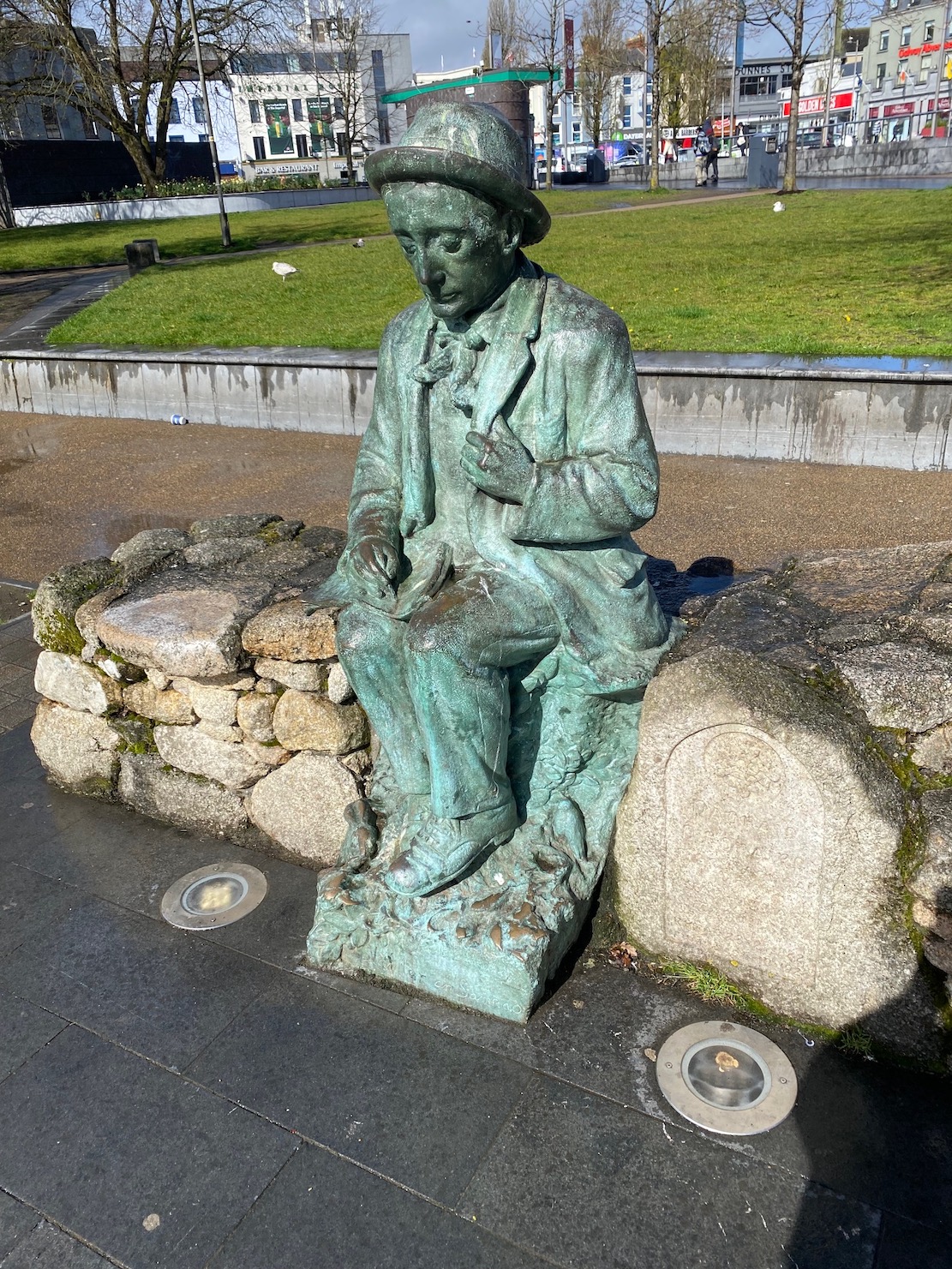
There is a good number of attractions in
this seaside city, which has more of the feel of a
town, centered by Eyre Square in front of the
railroad station and the setting for a seated
statue of poet Patrick O’Connor, looking a good
deal like either Tony Bennett or Chico Marx.
Galway Cathedral, beautifully situated on the
river, is a fine example of Renaissance Revival
architecture. Also adjacent to the train station
is the hotel called the Hardiman,
built in 1845, still Galway’s finest, now wholly
modernized with every amenity.
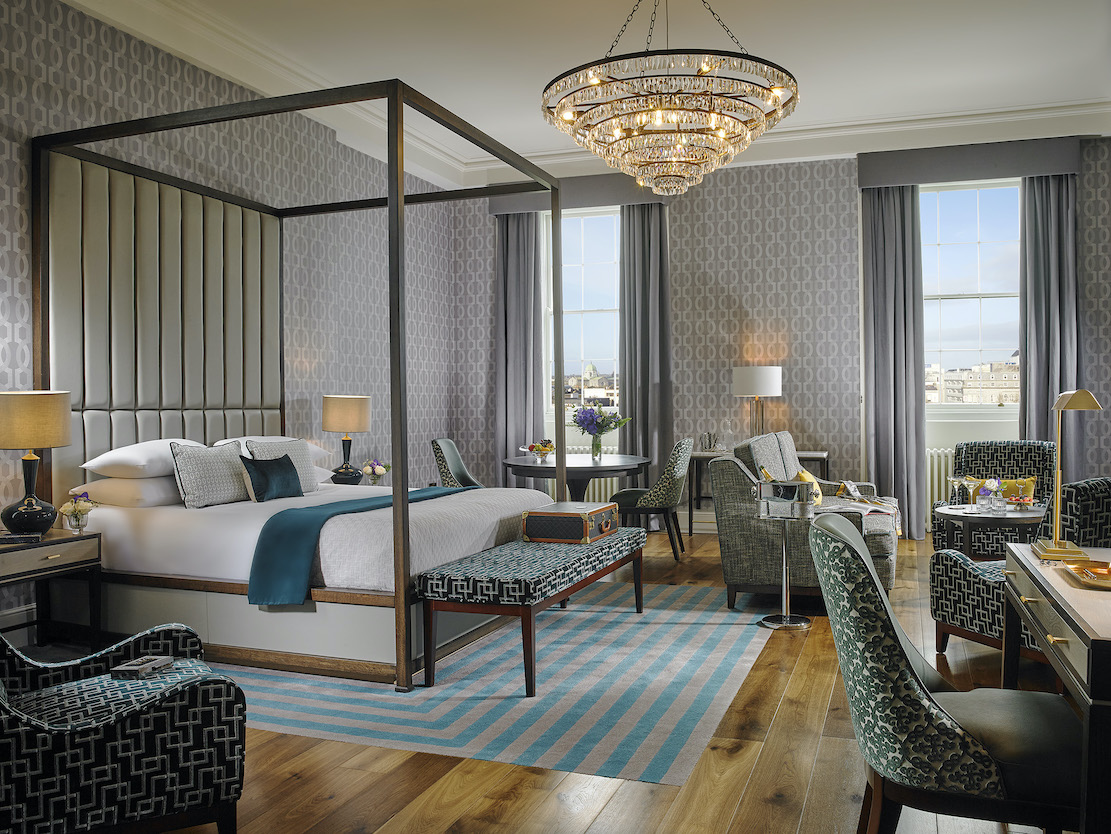 It’s a quiet city and the Hardiman is a
quiet hotel, with 103 rooms and 19 luxury suites,
all recently renovated—with a splendid lobby— but
keeping some traditional design elements.
Breakfast—a substantial one including the full
Irish version of eggs, sausage, black and white
pudding, grilled tomato and hash browns, and
pancakes with a berry compote—is included in the
room rates. At
the moment the hotel is running a special for two
nights in a double room and one dinner for
two for €588.
It’s a quiet city and the Hardiman is a
quiet hotel, with 103 rooms and 19 luxury suites,
all recently renovated—with a splendid lobby— but
keeping some traditional design elements.
Breakfast—a substantial one including the full
Irish version of eggs, sausage, black and white
pudding, grilled tomato and hash browns, and
pancakes with a berry compote—is included in the
room rates. At
the moment the hotel is running a special for two
nights in a double room and one dinner for
two for €588.
There are two dining venues, the main Gaslight
Brasserie with a fine bar and counter,
excellent lines of mirrored walls with tall
windows, glowing chandeliers, flowers on each
table and scattered palms. At dinner, options
include warm duck salad with chard figs and feta
cheese (€14.50); a seafood chowder with Pernod and
coriander cream (€9.50); and a duo of lamb with a
mini shepherd’s pie and a confit of garlic (€26). .jpg)
The smaller dining
area is the very convivial Oyster
Bar, where after a morning’s train ride, I
slouched down onto a comfortably stuffed
fabric-covered chair with sunlight 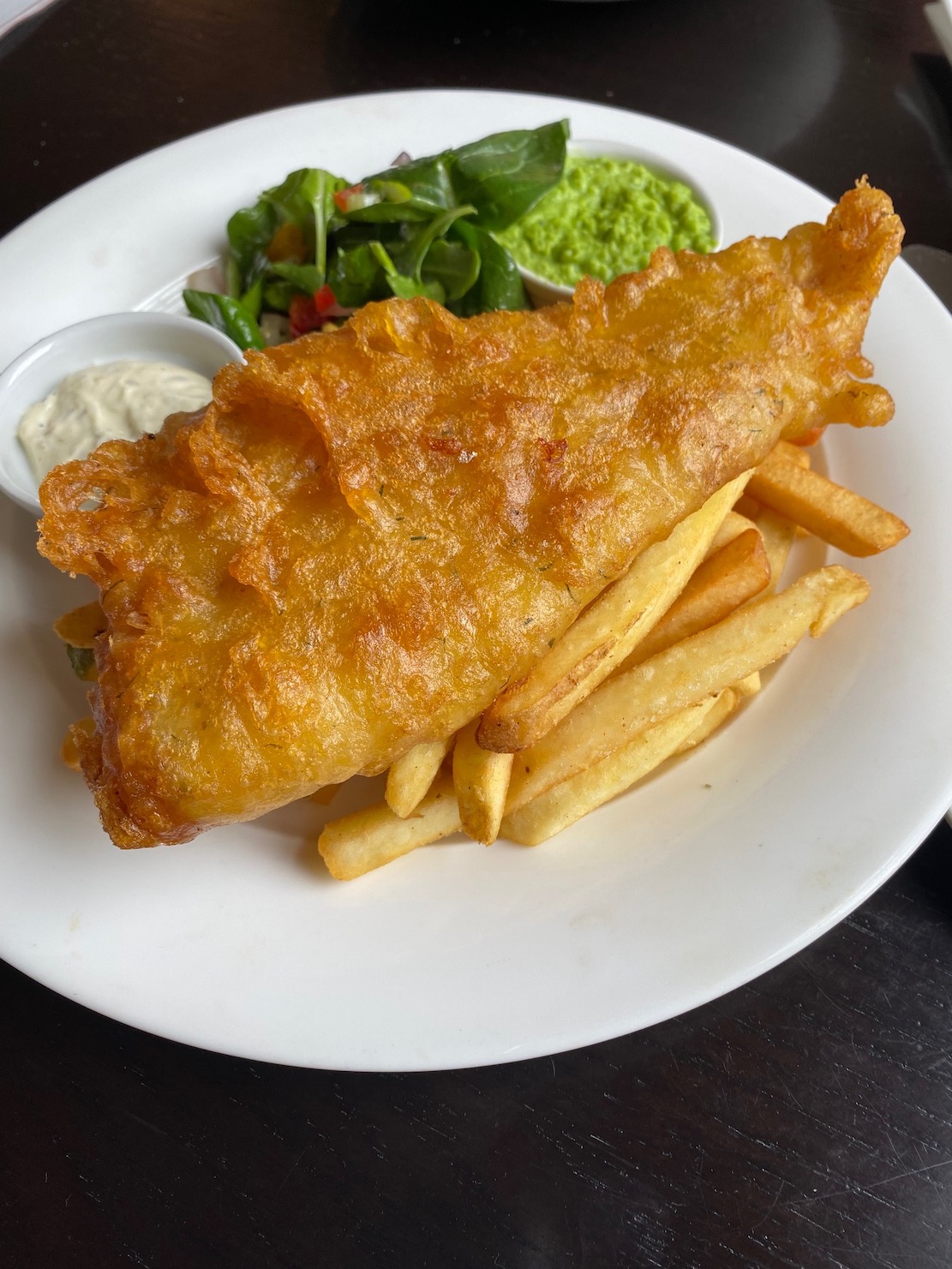 (something
of a rarity in Galway) streaming through the
windows, and very much enjoyed a leisurely lunch
of golden, hot beer-battered cod fish and chips
with wasabi-laced peas, lemon and tartar sauce
(€18.50), and a mildly spiced, terracotta colored
chicken curry with fragrant basmati rice, pappadum
cracker and mustard chutney (€19.50). There’s
also a farmhouse cheese selection (€12).
(something
of a rarity in Galway) streaming through the
windows, and very much enjoyed a leisurely lunch
of golden, hot beer-battered cod fish and chips
with wasabi-laced peas, lemon and tartar sauce
(€18.50), and a mildly spiced, terracotta colored
chicken curry with fragrant basmati rice, pappadum
cracker and mustard chutney (€19.50). There’s
also a farmhouse cheese selection (€12). 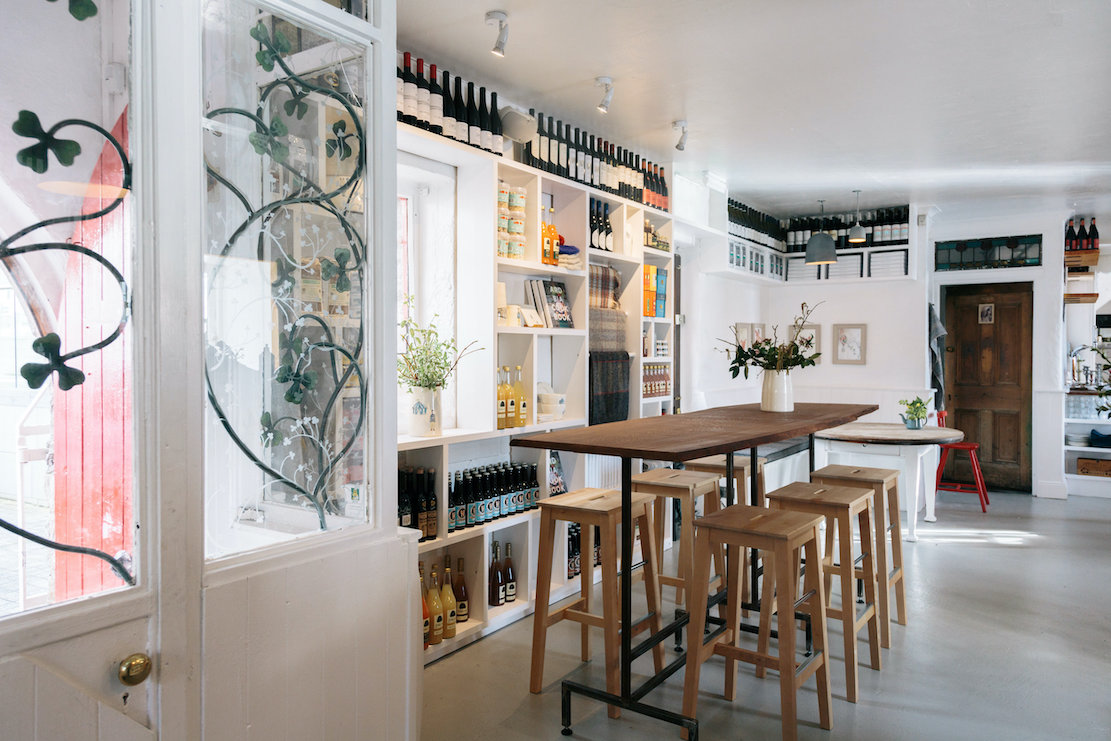
Ard Bia (“high food” in Gaelic),
near the city’s quaint but modest Spanish Arch,
overlooks the Claddagh Basin from a two-story
stone house dating back to at least 1651, and it
was long a place local sailors and merchants would
hie to from the nearby docks. Various owners in the 20th
century used it for various shops until taken over
in 1991by Harriet Leander, then owner Aoibheann
MacNamara with chef Ronan Reynolds for the past
twelve years.
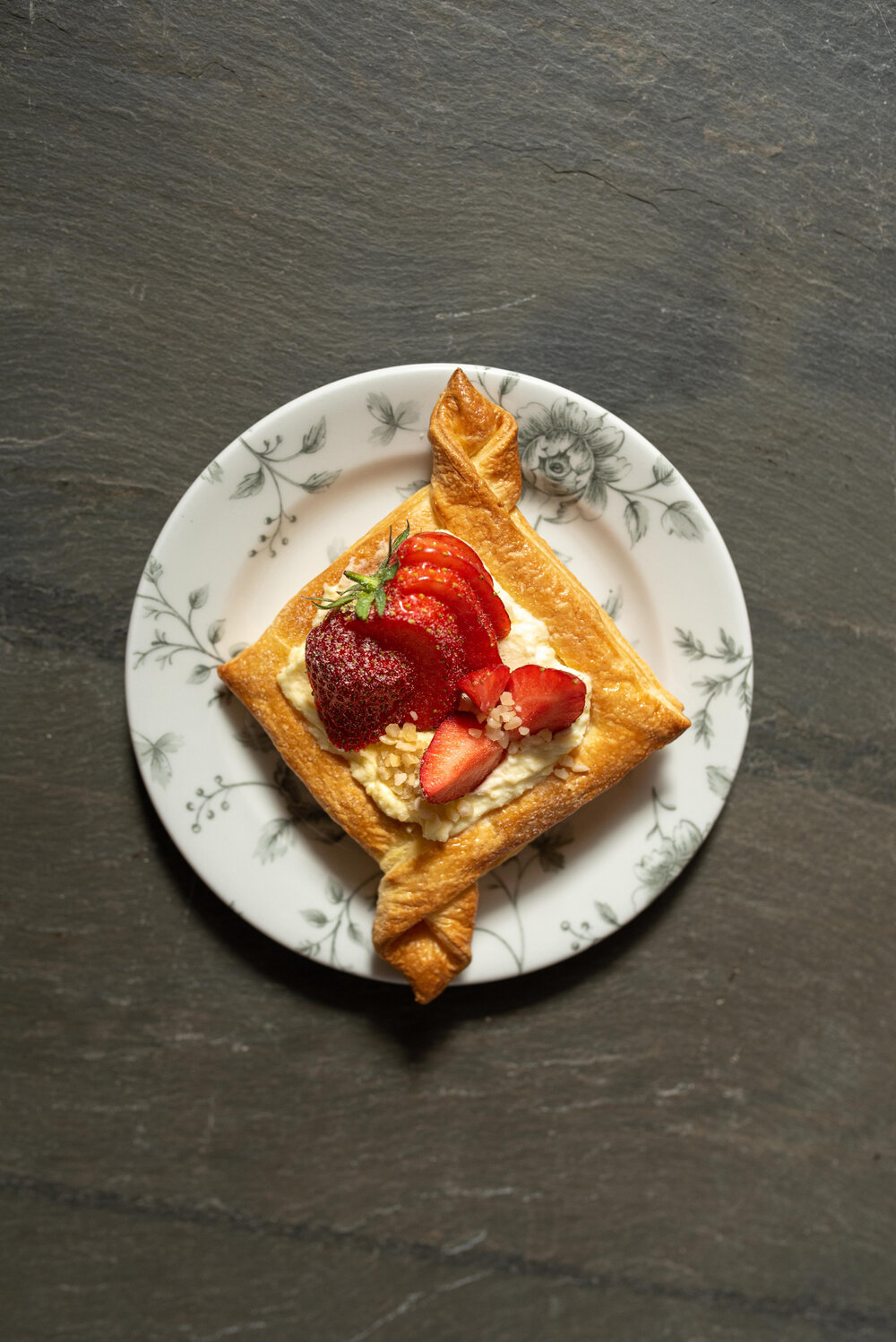 Among the sillier things the Michelin
Guide has ever printed is that Ard Bia has a
“shabby-chic, bohemian style,” which is far from
the truth about this absolutely beguiling, rustic
space with great bones, vibrant colors and a
comfort level akin to dining at one’s very
tasteful Irish relatives’ home. The Tweed
Project’s Triona Lillis designed the interior with
a “moodboard” of images, chestnut high bar tables,
Donegal tweed cushions by Giusy Degano and
handmade pottery lampshades by Spiddal potter
Martha Williamson, with painted white walls,
simple wooden furniture, wine bottles on shelves,
a shamrock filigree on the door windows, country
flowers in coffee pots and rough wooden tables set
with stoneware. It all looks just as it should.
Among the sillier things the Michelin
Guide has ever printed is that Ard Bia has a
“shabby-chic, bohemian style,” which is far from
the truth about this absolutely beguiling, rustic
space with great bones, vibrant colors and a
comfort level akin to dining at one’s very
tasteful Irish relatives’ home. The Tweed
Project’s Triona Lillis designed the interior with
a “moodboard” of images, chestnut high bar tables,
Donegal tweed cushions by Giusy Degano and
handmade pottery lampshades by Spiddal potter
Martha Williamson, with painted white walls,
simple wooden furniture, wine bottles on shelves,
a shamrock filigree on the door windows, country
flowers in coffee pots and rough wooden tables set
with stoneware. It all looks just as it should.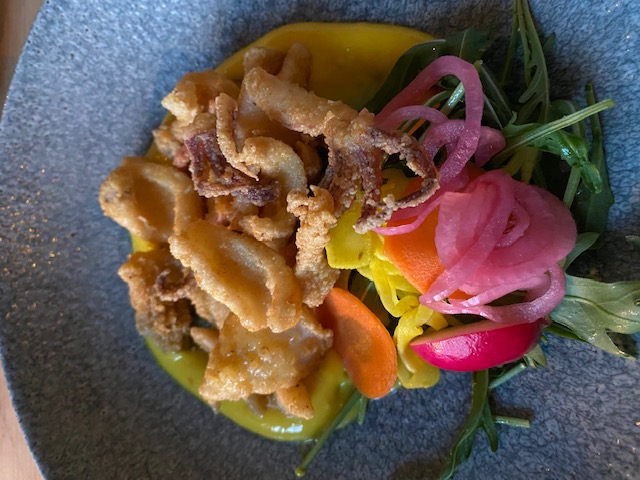
Menus change all the time at Ard Bia. You
might start off with a Kraken rum with
chilli-infused ginger beer (€10), and there’s a
short but well-chosen wine list, though no liquor.
I enjoyed the Galway Bay Brewery’s Lost at Sea
Stout.
The
night I dined at Ard Bia, the meal began with
fabulous breads and butter, and an appetizer of
pork belly balls with dates, bok choy, and an
apple fennel slaw with beautifully reduced pork jus (€13)
and
Connemara crab with pickled kohlrabi, radish,
burnt apple and a squid ink cracker (€14.) Killary
mussels are highly spiked with hot harissa, 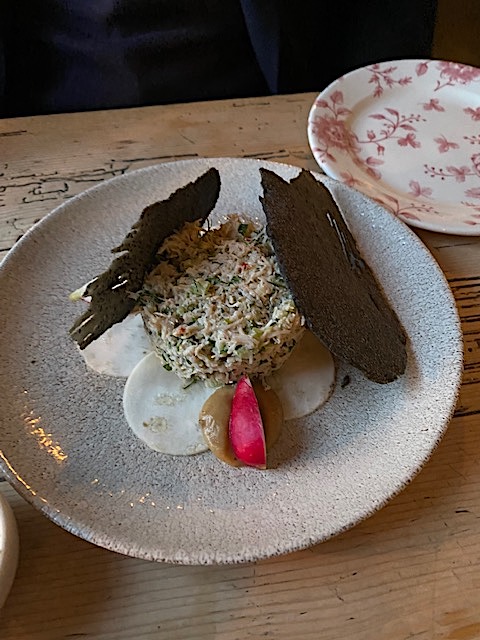 ‘nduja,
sesame seeds and orange (€12.5).
Succulent, fleshy hake fillet came with mussels in
a purple potato broth, with fennel, broad beans
and a lovely salsa verde
(€29), while a good and rare Morgan’s ribeye came
with hasselback potato, oyster mushrooms and
chimichurri (€33).
‘nduja,
sesame seeds and orange (€12.5).
Succulent, fleshy hake fillet came with mussels in
a purple potato broth, with fennel, broad beans
and a lovely salsa verde
(€29), while a good and rare Morgan’s ribeye came
with hasselback potato, oyster mushrooms and
chimichurri (€33).
You can always tell when a restaurateur has
made her own desserts. Our meal’s sweet endings
(all €9) involved bittersweet chocolate mousse
with luscious roasted plums and a dollop of
mascarpone; vanilla and buttermilk panna cotta
with a tangy lemon-almond crumble, rhubarb and
pistachios; and banoffee buns with chocolate
ganache and vanilla ice cream.
The rain came and went, and our walk back
to the center of town smelled of the sea and the
ozone, which it very likely will when you visit
this town where a spell or two of rain is likely,
even if the locals never pack an umbrella.
Now
eleven years strong, Kāi (22 Sea Road) takes
its name from a Maori word for food, which is not
something one 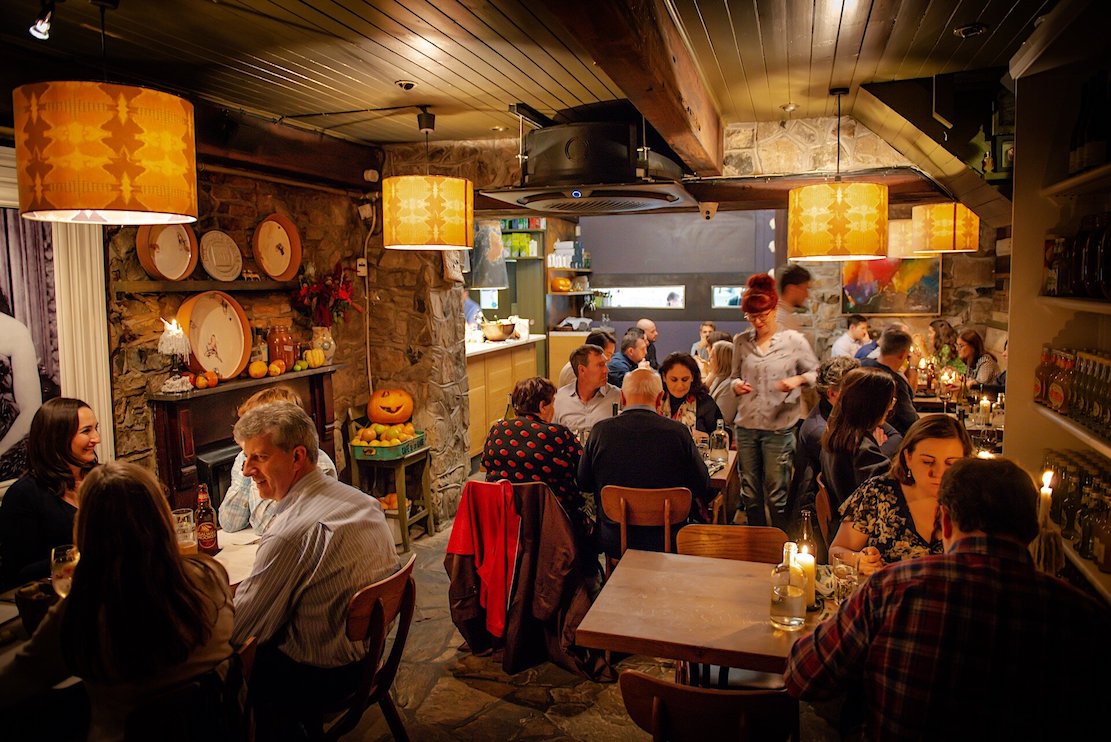 expects
in a city like Galway. But New Zealand-born
chef-owner Jess Murphy is as staunchly Kiwi as she
is now Galwegian, and Kāi is down among the winding
streets of the city’s West End, which now bustles
with eateries, bakeries and pubs.
expects
in a city like Galway. But New Zealand-born
chef-owner Jess Murphy is as staunchly Kiwi as she
is now Galwegian, and Kāi is down among the winding
streets of the city’s West End, which now bustles
with eateries, bakeries and pubs.
 The
management proudly announces, “What’s in season is
what will be on the menu,” listing the sources for
their provender, and its décor is as inviting as
you could wish, with wonderful big hanging lamps
that warm the atmosphere over wooden tables, stone
walls, flagstone floors, baskets of apples, an old
iron-faced fireplace and strong local black and
white photography.
The
management proudly announces, “What’s in season is
what will be on the menu,” listing the sources for
their provender, and its décor is as inviting as
you could wish, with wonderful big hanging lamps
that warm the atmosphere over wooden tables, stone
walls, flagstone floors, baskets of apples, an old
iron-faced fireplace and strong local black and
white photography.
There is a very
fair fixed price menu, that may, on any given
evening, include 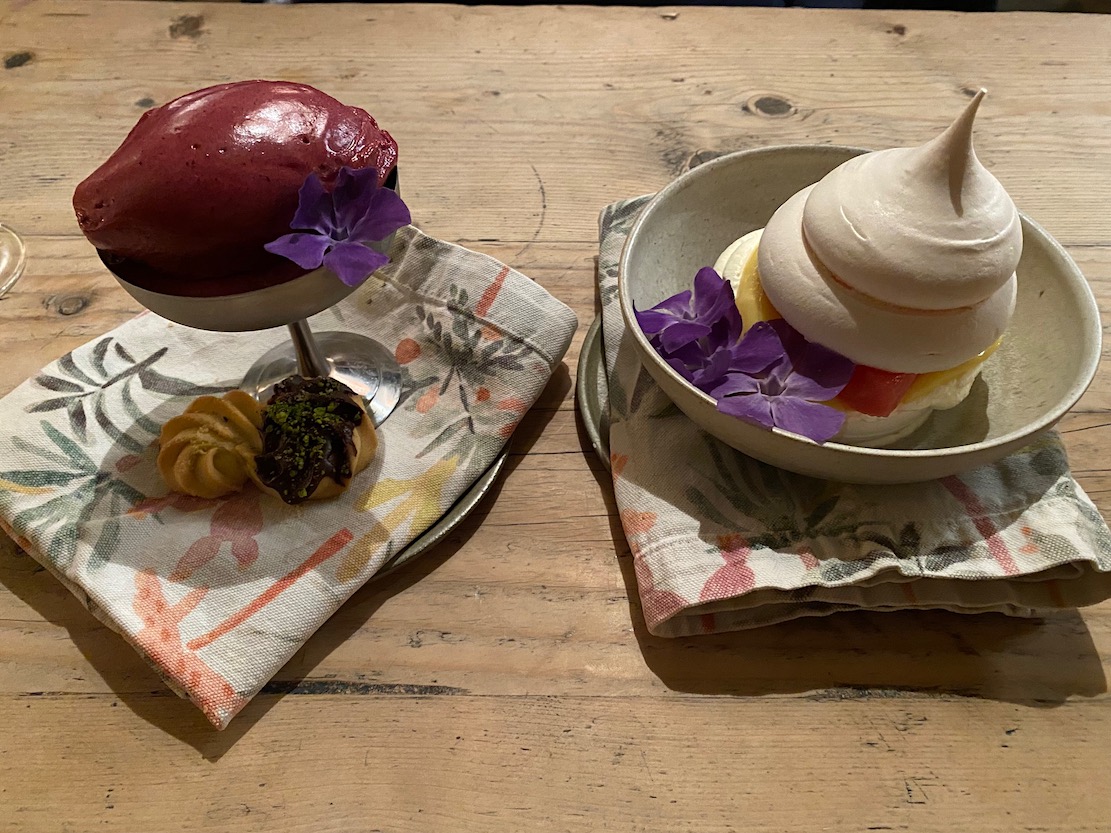 cured meats or
a carrot crudo. Of course there’s local crab,
theirs is from Clare, with celeriac and pumpkin
seeds (€14). Silken, rosy Serrano ham is enhanced
with fior
de latte mozzarella and translucent slices
of apples (€12.50). Here hake is served simply
with borlotti beans and romesco sauce (€27).
Socca, the weekend snack of Nice, is made with
nettles, minted beans and almonds (€25.50), and
the pork chop was superb, with harissa-spiced
beets and chimichurri (€27). In season there
will be venison.
cured meats or
a carrot crudo. Of course there’s local crab,
theirs is from Clare, with celeriac and pumpkin
seeds (€14). Silken, rosy Serrano ham is enhanced
with fior
de latte mozzarella and translucent slices
of apples (€12.50). Here hake is served simply
with borlotti beans and romesco sauce (€27).
Socca, the weekend snack of Nice, is made with
nettles, minted beans and almonds (€25.50), and
the pork chop was superb, with harissa-spiced
beets and chimichurri (€27). In season there
will be venison.
Desserts are a delectable reward for
finishing your supper, with malt ice cream topped
with ripe strawberries and milk crumble (€10);
crispy Pavlova meringue with rhubarb and lemon
(€9); almond pudding with burnt butter ice cream
(€9) and a blueberry and basil sorbet with
Viennese Florentine cookie (€8.50).
The very decently priced wine list runs to
about 40 labels, with plenty of choices under €50.
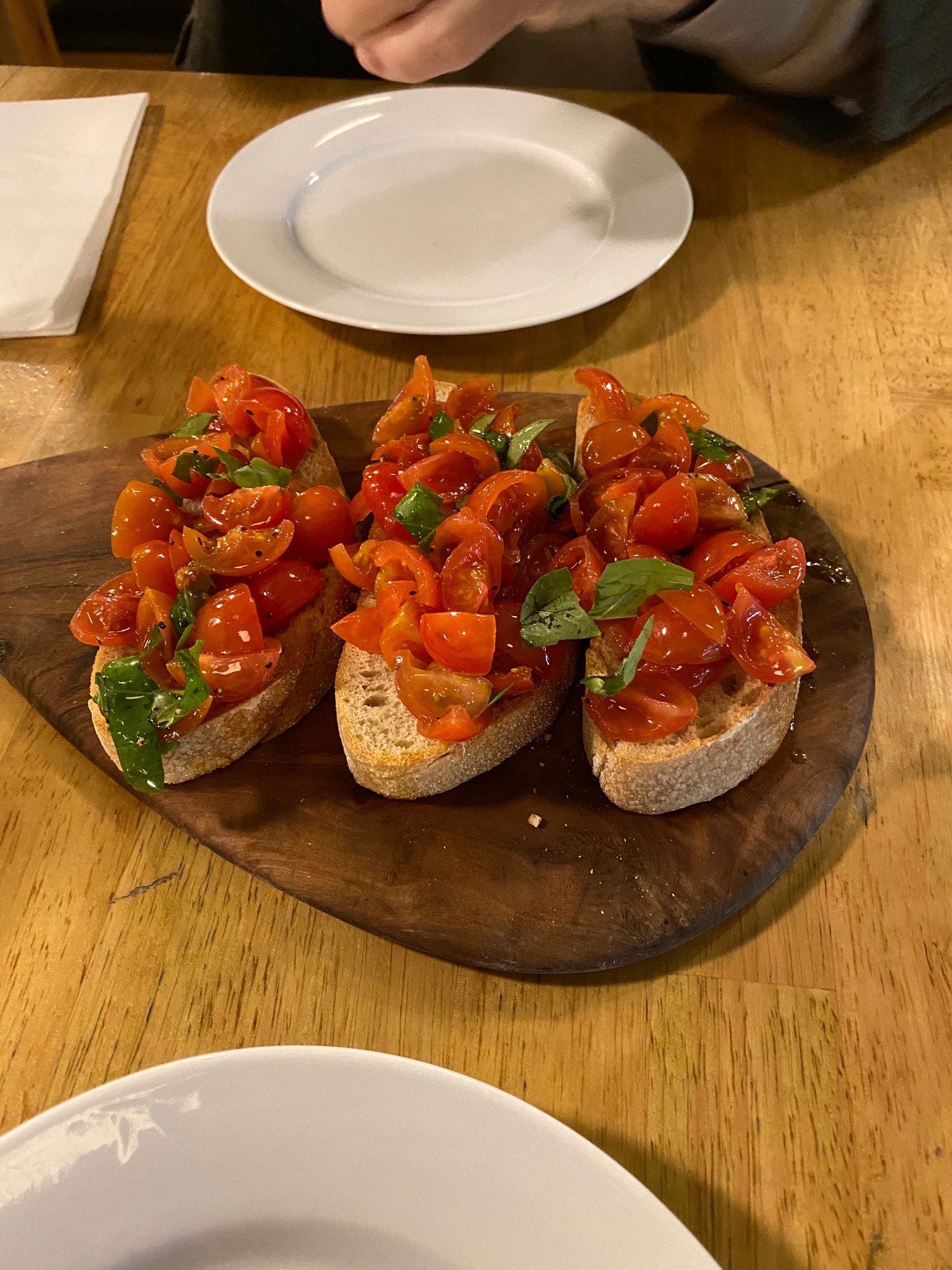 Like
everywhere else these days, Galway is rife with
casual Italian restaurants, and Trattoria
Magnetti, on Quay Street, is a bright
storefront with clean, modern lines. Owned and run
by brothers Sean and Marco Magnetti, it was
originally opened in 1989 by their parents, Sergio
and Mary, and all of the excellent fresh pastas
are made on the premises. So well known is their
pasta that they sell it to other shops around
town.
Like
everywhere else these days, Galway is rife with
casual Italian restaurants, and Trattoria
Magnetti, on Quay Street, is a bright
storefront with clean, modern lines. Owned and run
by brothers Sean and Marco Magnetti, it was
originally opened in 1989 by their parents, Sergio
and Mary, and all of the excellent fresh pastas
are made on the premises. So well known is their
pasta that they sell it to other shops around
town. 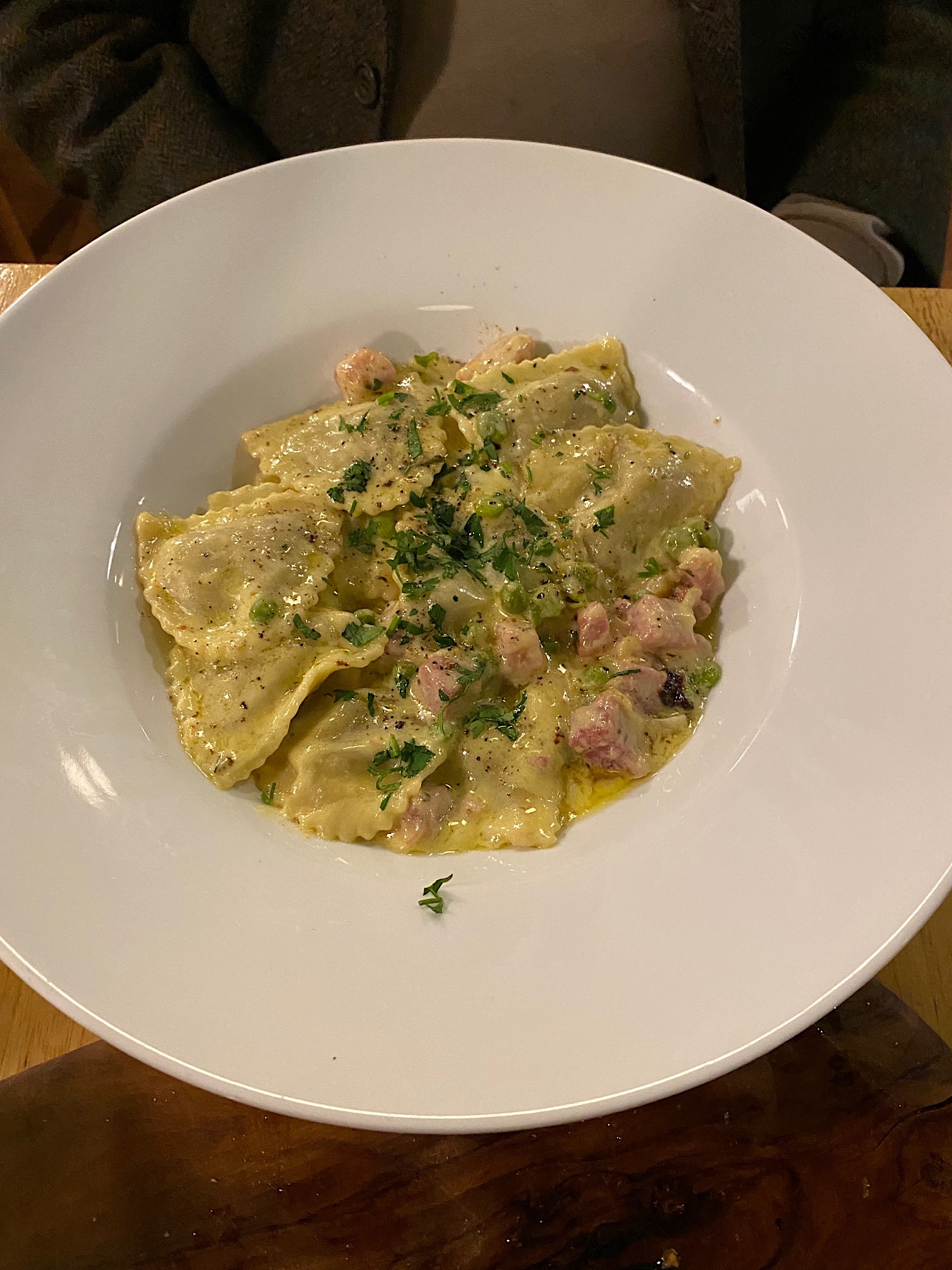
I found
the ravioli stuffed with Irish beef, mortadella, Parma
ham in a pea-studded white wine sauce (€11.50)
truly sumptuous, and the tagliatelle
with pancetta, mushrooms scented with thyme
and a white wine cream sauce (€10) just as richly
rewarding.
When you sit down you get some bruschetta
topped with sweet chunks of olive-oil moistened
tomato. There are eight pizzas and calzones as
good as any I’ve had in most major cities,
including a diavola
with sausage, salami and chili (€11.50),
and veneta
with creamy Gorgonzola, sweet sliced pear and
Parma ham (€11.50).
There are 30 wines from unusual Italian
producers and poured in three sizes, with whole
bottles averaging under €30.
❖❖❖
L'AVENUE AT SAKS
80 East 50th
Street
212-940-4099
By John Mariani
Photos by L'Avenue at Saks
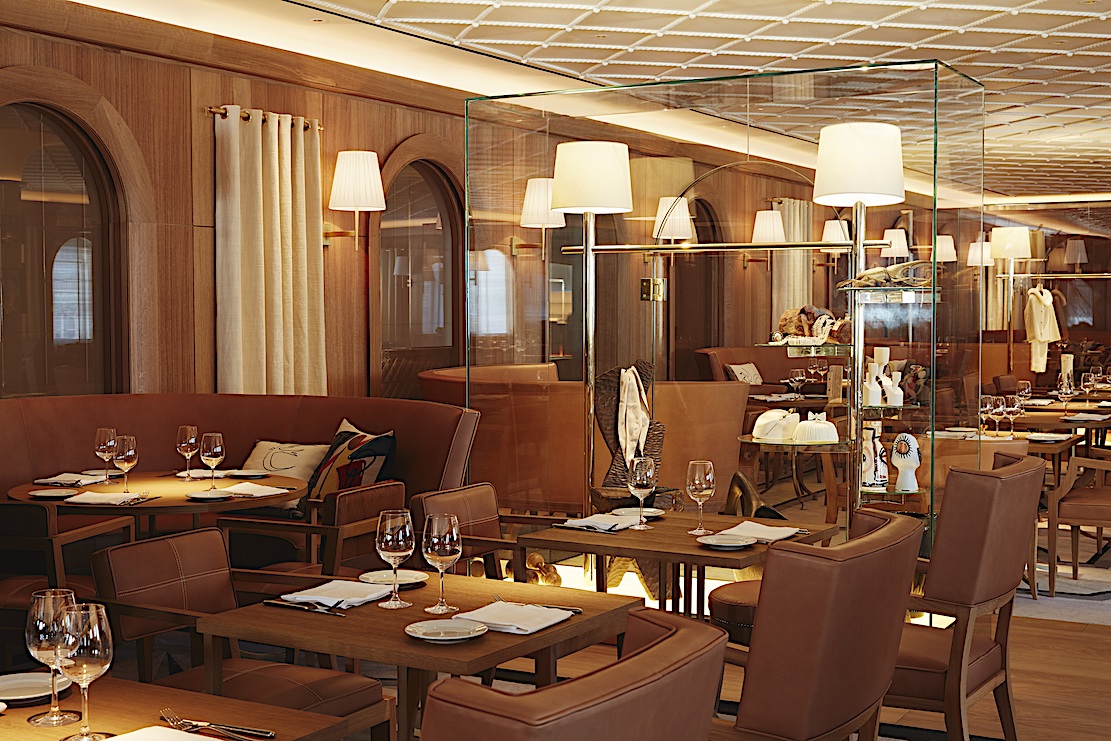
Eating
places in large department stores
have a long history, not least in Europe,
where Harrod’s in London, Printemps in Paris
and KaDeWe in Berlin are both stylish and
exhaustive. In the States, every major store
once had a restaurant, some of them quite
spectacular, some of them elegant tea rooms
for the ladies who lunch. Outside
of New York, Marshall Fields, J.L. Hudson,
Neiman Marcus, Bullock’s and others were all
very different, and New York led the pack
with highly individualized restaurants in
Macy’s, Lord & Taylor, Bloomingdale’s,
B. Altman, Best and Co. and others that
defined their own particular style and
clientele they catered to. And there was
always attention paid to patrons’ children. I
recall fondly one that had a milk bar with
Graham Crackers.
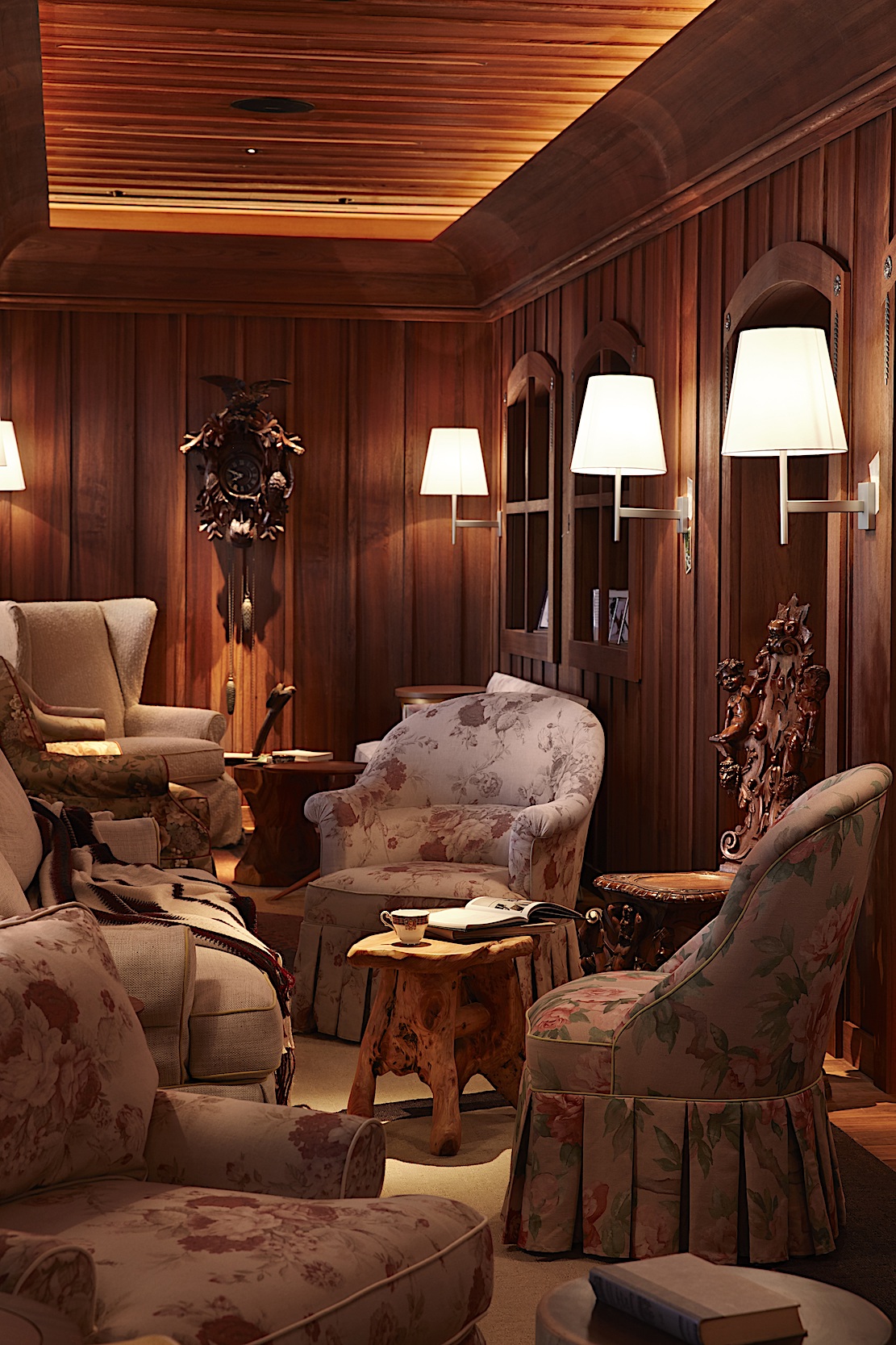 Such places
lost their popularity as of the 1970s, owing
to changing tastes and the slow demise of
department stores themselves. Happily, many of
those that survived the 20th century have
given the store restaurants a true
renaissance, none more so than Saks Fifth
Avenue, which opened in 1924.
Such places
lost their popularity as of the 1970s, owing
to changing tastes and the slow demise of
department stores themselves. Happily, many of
those that survived the 20th century have
given the store restaurants a true
renaissance, none more so than Saks Fifth
Avenue, which opened in 1924.
What
previously had been a modest eatery on the
eighth floor is now a swank Le Chalet café and
terrace (left)—Rock Center is across
the street—and on the ninth floor is L’Avenue,
which in league with the Costes Group
restaurant of the same name in Paris has given
New York one of the most beautiful and elegant
spaces of the recent past, designed by
Philippe Starck.
You enter on East 50th Street, opposite
St. Patrick’s Cathedral, and ascend in a
private elevator to a dimly lighted tunnel
that leads around corners to a dining room
where you are graciously received by a handful
of stunning hostesses and shown to a table,
past glass cases of objets d’art in a French
moderne dining room done in tones of taupe and
caramel, with carefully modulated lighting
that is ideal for seeing who’s coming and
going, while glowing table lamps do the same
for the lovely food and chinaware. There is
also an alfresco terrace for parties (below).
Such elegance I did not expect; indeed,
I didn’t know what
to expect, believing L’Avenue might be an
upgraded version of a traditional department
store restaurant. I also wondered who would
want to eat there, especially after six
o’clock, when Saks closes. Opened in 2019,
then hit with the Covid closings, L’Avenue had
had little publicity or reviews. (God forbid
the New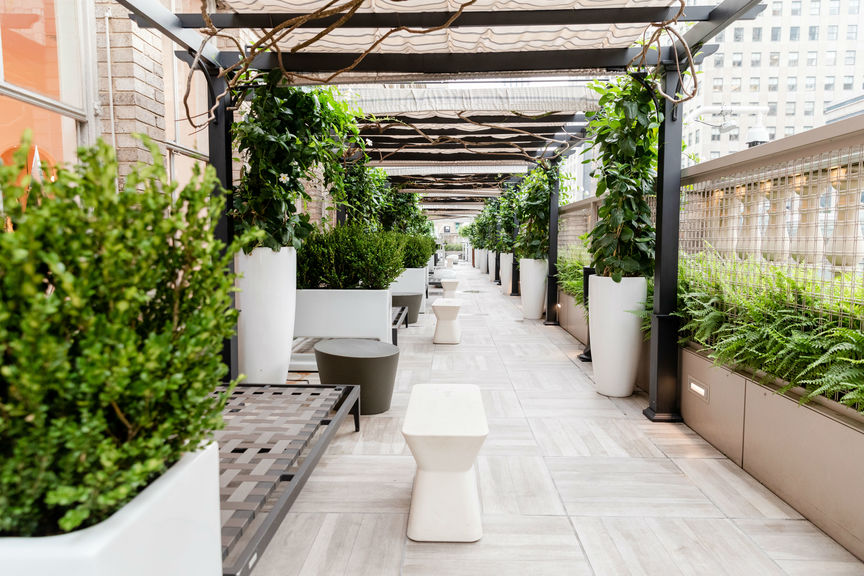 York Times or New York
magazine should cover a place so refined!) Yet
it has clearly drawn a crowd, mostly young and
many quite fashionable. It’s a place where
women really dress up, perhaps with the day’s
purchases downstairs (there’s a Loubutin
boutique adjacent to Le Chalet); male patrons
show their own feeble fashion sense by wearing
a lot of black t-shirts and dark jeans.
York Times or New York
magazine should cover a place so refined!) Yet
it has clearly drawn a crowd, mostly young and
many quite fashionable. It’s a place where
women really dress up, perhaps with the day’s
purchases downstairs (there’s a Loubutin
boutique adjacent to Le Chalet); male patrons
show their own feeble fashion sense by wearing
a lot of black t-shirts and dark jeans.
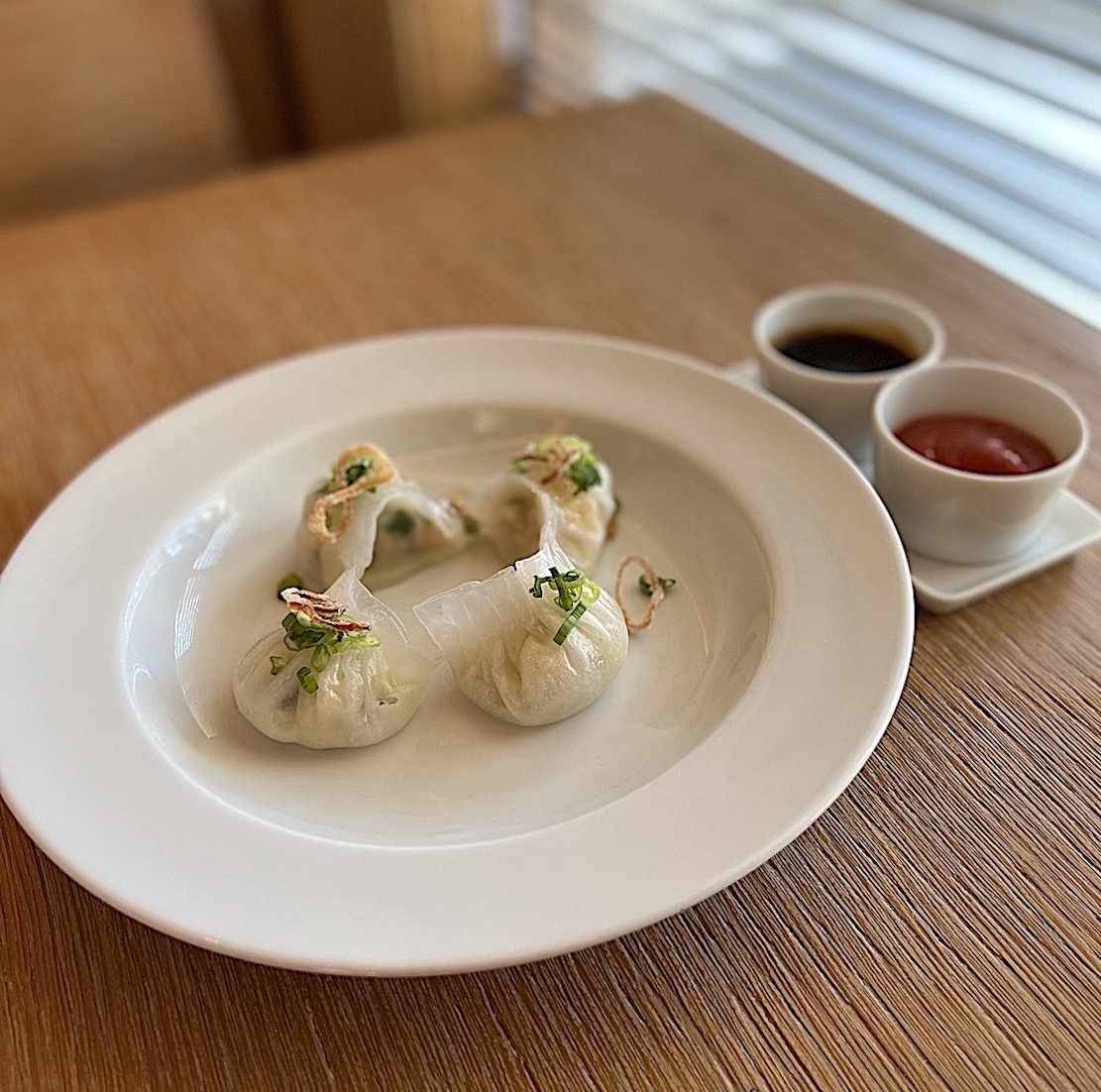 You’d
expect Executive Chef Cedric Domenech’s
menu to be more-or-less modern French, but
there is a good deal of Asian items on it, as
well as the ubiquitous burrata.
Some dishes, called “classics,” are original
to the Paris venue, including vapeurs
de crevettes “Lily Wang” ($23),
referring to the chef at Hôtel Costes in Paris
who first created the dish for L’Avenue. It is
a variant of har gow
Chinese steamed shrimp dumplings (left)
with crispy shallots and scallions served with
chili dipping sauce and a sweet black mushroom
soy sauce.
You’d
expect Executive Chef Cedric Domenech’s
menu to be more-or-less modern French, but
there is a good deal of Asian items on it, as
well as the ubiquitous burrata.
Some dishes, called “classics,” are original
to the Paris venue, including vapeurs
de crevettes “Lily Wang” ($23),
referring to the chef at Hôtel Costes in Paris
who first created the dish for L’Avenue. It is
a variant of har gow
Chinese steamed shrimp dumplings (left)
with crispy shallots and scallions served with
chili dipping sauce and a sweet black mushroom
soy sauce.
Crispy chicken spring rolls ($23)
derive from Thai cookery, served with
lettuce/mint wraps and a sparkling
ginger-chili dipping sauce. On the French side
is wonderfully creamy fresh duck foie
gras terrine that needs nothing more than
toasted country bread and fine butter. 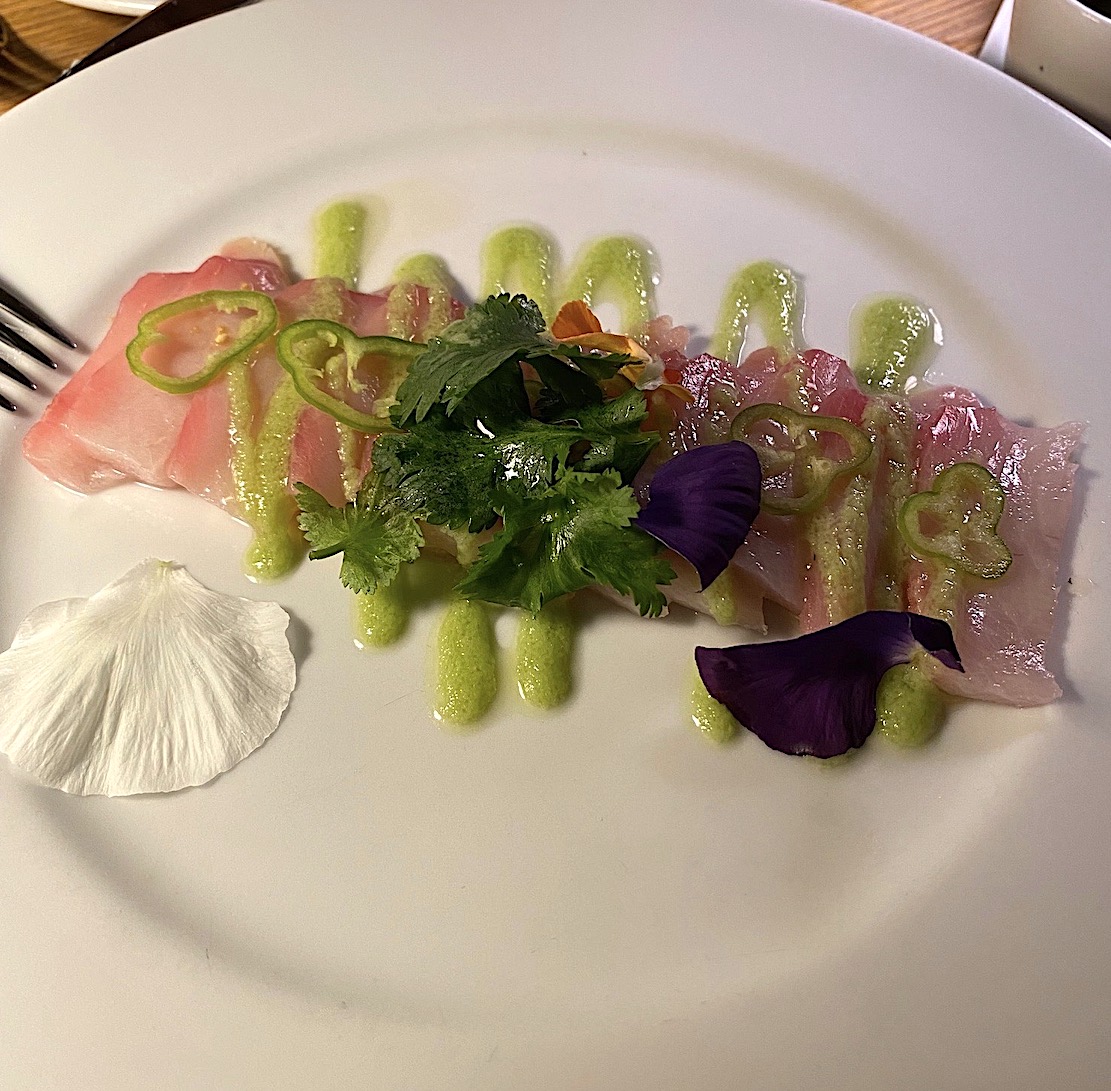 A
carpaccio of yellowtail ($38) is a refreshing
spark as an appetizer (right), and
Thailand comes back into the picture as a main
course with plump marinated shrimp with a
pineapple-chili chutney and velvety
peanut-coconut sauce ($42). (A little
more spice wouldn’t hurt the Asian dishes.)
A
carpaccio of yellowtail ($38) is a refreshing
spark as an appetizer (right), and
Thailand comes back into the picture as a main
course with plump marinated shrimp with a
pineapple-chili chutney and velvety
peanut-coconut sauce ($42). (A little
more spice wouldn’t hurt the Asian dishes.)
Photo
by John Mariani
The classic French
masterpiece of simplicity—which takes a lot of
know-how to get just right—is Dover sole “belle
meunière,” lightly floured and seared in
plenty of butter, then deboned and served with
a tangy lemon beurre blanc ($90). 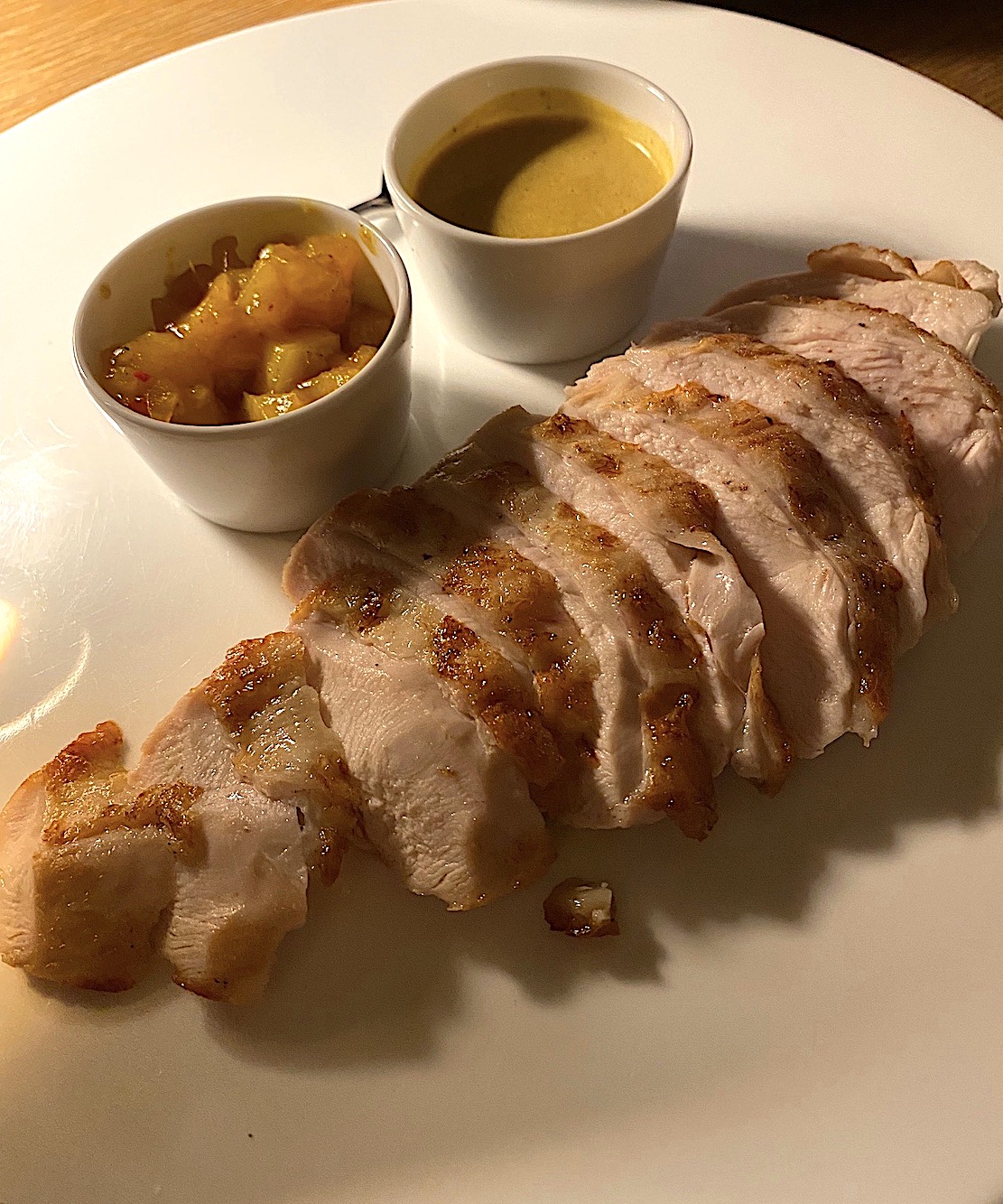 I can never turn down a dish with fresh
morels, and Domenech lavishes them on a bowl
of cream-rich macaroni ($34). Blanc de
poulet bio ($28) didn’t sound very
interesting, but what came was a succulent
poached chicken breast enhanced with curry
seasonings and sided with sweet chutney (right).
I can never turn down a dish with fresh
morels, and Domenech lavishes them on a bowl
of cream-rich macaroni ($34). Blanc de
poulet bio ($28) didn’t sound very
interesting, but what came was a succulent
poached chicken breast enhanced with curry
seasonings and sided with sweet chutney (right).
Photo by John
Mariani
Pastry Chef Stephanie Oliveira has
worked over the “Costes crackers cheesecake”
of Paris, using slightly salty French LU Tuc
butter crackers, first made in 1846, in place
of the usual Graham Cracker in the crust, then
finishes it with a fromage
blanc ice cream. Also recommended are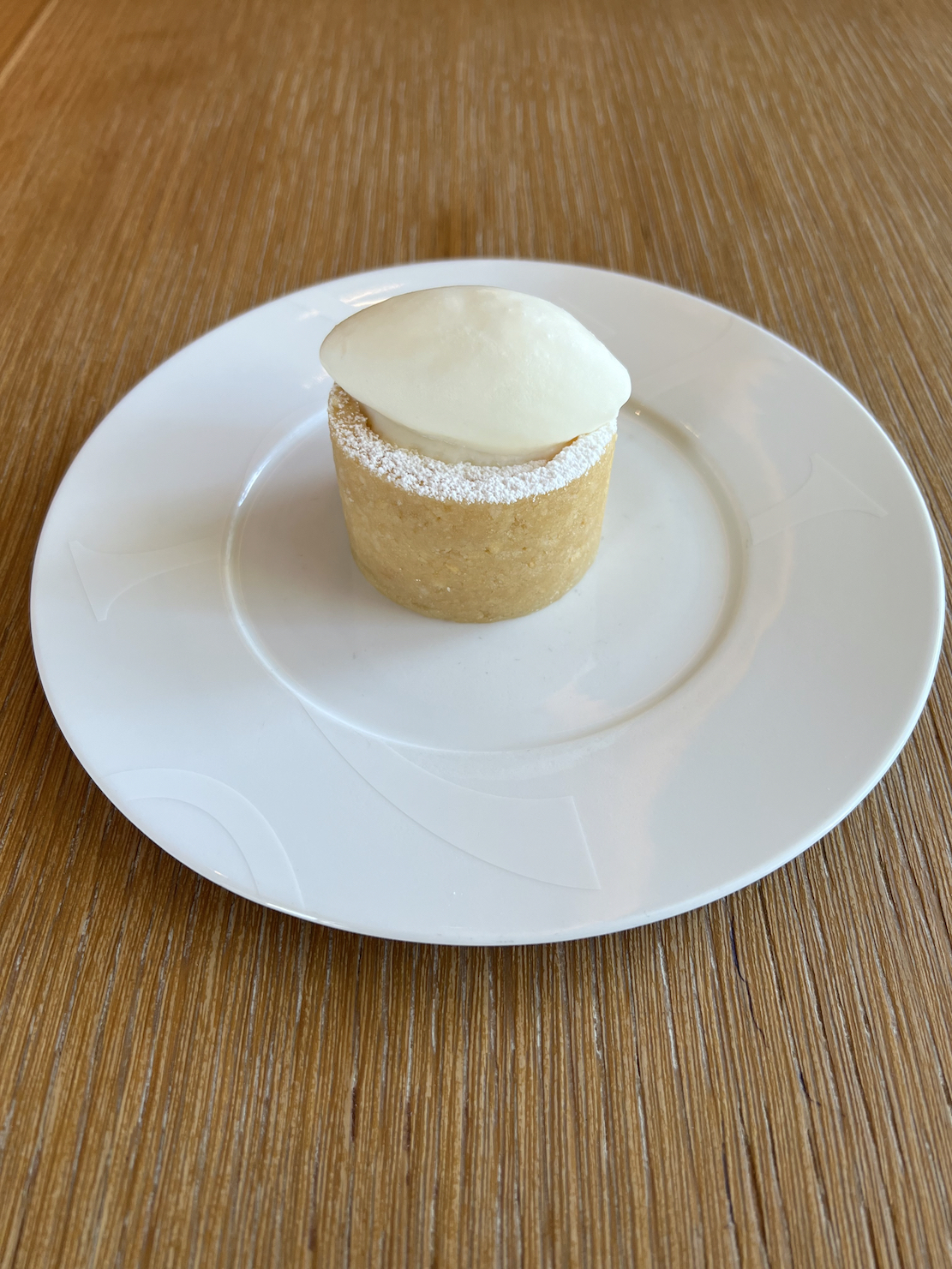 her vanilla tart ($16) with poached rhubarb,
strawberries and crème fraîche ice cream, and
a raspberry panna
cotta ($16) with coconut crumble,
raspberries and olive oil sorbet (which is
tagged as vegan). Banoffee—a portmanteau of
“banana” and “toffee”—($18) is a gloppy
British sweet abundant with banana ice cream,
smoked caramel ice cream, rum caramel sauce
and caramelized banana. The only distasteful
oddity was an over-the-top take on Girls Scout
s'mores ($19) with chocolate mousse, toasted
marshmallow and Graham Cracker ice cream that
came under a glass cloche
filled with acrid smoke.
her vanilla tart ($16) with poached rhubarb,
strawberries and crème fraîche ice cream, and
a raspberry panna
cotta ($16) with coconut crumble,
raspberries and olive oil sorbet (which is
tagged as vegan). Banoffee—a portmanteau of
“banana” and “toffee”—($18) is a gloppy
British sweet abundant with banana ice cream,
smoked caramel ice cream, rum caramel sauce
and caramelized banana. The only distasteful
oddity was an over-the-top take on Girls Scout
s'mores ($19) with chocolate mousse, toasted
marshmallow and Graham Cracker ice cream that
came under a glass cloche
filled with acrid smoke.
The wine list is solidly selected, not
huge, with a good selection of wines by the
glass ($15-$34) and an extensive cocktail
menu. Wine bottle prices can be stiff,
however, with some at a 300% mark-up. Good to
see a New York State Riesling on there.
L’Avenue
has seen a soigné success that has obviously
been built on word of mouth and subtle
marketing, and if it stays at the occupancy
and standard of tastefulness it now enjoys, it
should be a template for modernity and chic,
in contrast to the tired faux-clubbiness of a
place like Ralph Lauren’s Polo Grill. L’Avenue
feels like a true night out, with an aerie’s
view and a welcome nonchalance not easily
encountered these days with such a high level
of cuisine.
Opened seven days a week
from 11:30 AM to 10 PM.
❖❖❖
ANOTHER VERMEER

It
was not until Thursday that Katie was able to
get hold of Coleman at his office. The
Wednesday issue of Art Today
had a profile of Danielides, who was said to
have been more than once investigated by
Interpol over smuggling art and antiquities,
including some robbed during the Gulf War. Nothing,
however, was ever proven and Danielides was
never indicted.
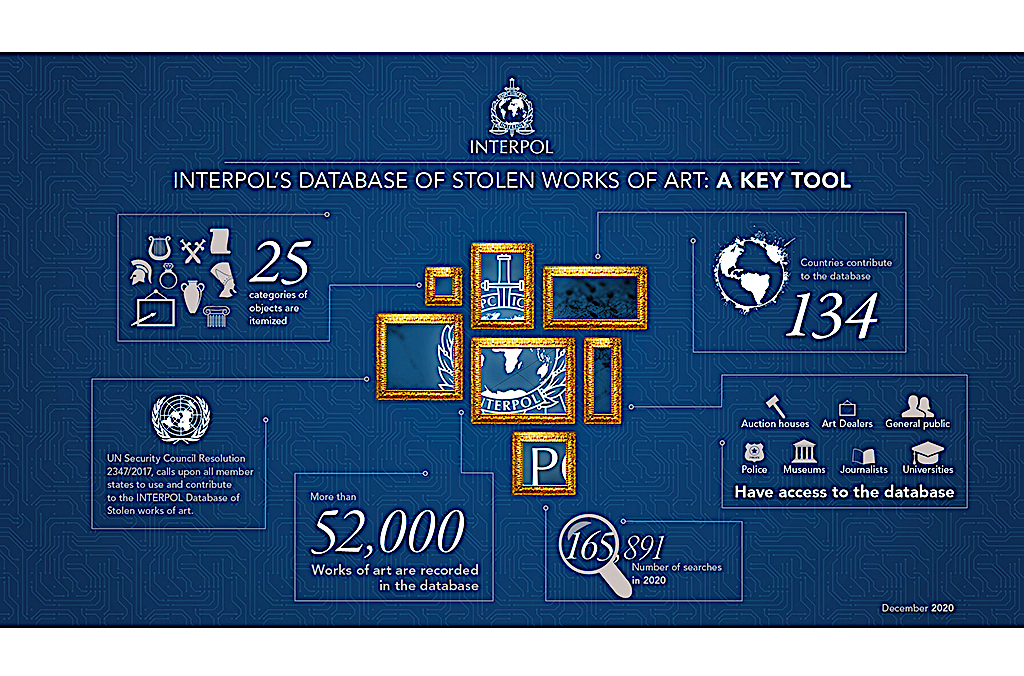
The article also alluded to the Greek
tycoon’s reputation for what it called “kinky
sex” and rumors of orgies on his private yachts
and residences throughout the Greek islands.
Katie thought Coleman was going over the line
with these unsubstantiated reports, tilting
towards tabloid journalism, but the editor said
he put it in “just to spice things up a little,”
insisting “A little sex never hurts an otherwise
solid story.”
“So what was this mysterious trip you
took, after telling me you were staying in bed
with a cold all weekend?” Katie asked Coleman.
“I felt a little better the next
morning,” said Coleman. “Do I have to tell you
everywhere I’m going?”
“No, but I am kind of curious why you’d
suddenly get out of a sickbed and fly to China
on the spur of the moment.”
“First of all, it was Taiwan, and second,
I couldn’t refuse a trip to interview Hai Shui.”
“What? Hai Shui invited you to Taiwan?”
“Yes, he knew I was going to profile him
sooner or later and he wanted me to ‘get my
facts straight’.”
“Hold on, John. You’re
telling me Art Today
paid your ticket to Taiwan?”
Coleman laughed. “That’ll be the day!
They wouldn’t pay for my train ticket to
Philadelphia.”
“Then who did?”
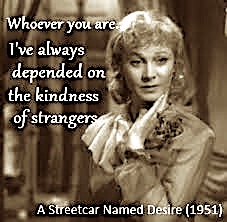 “C’mon, Katie, stop
playing naïve. Maybe McClure’s has
the backing to send you
around the world on an unlimited expense
account, but most journalists have to depend on
the kindness of strangers.”
“C’mon, Katie, stop
playing naïve. Maybe McClure’s has
the backing to send you
around the world on an unlimited expense
account, but most journalists have to depend on
the kindness of strangers.”
“Since when did you become Blanche
DuBois?”
“Katie, don’t play so high and mighty
with me. We’ve known each other a long time,
when we were writing for the Village
Voice for $150 an article. You know damn
well every industry runs press junkets to bring
journalists in for an article.”
“Yea, and they expect a very favorable
article out of it, as a result.”
“That doesn’t mean a good journalist is
going to sell his soul for a first-class ticket
to Taiwan.”
“You flew . . . first class?”
“Yeah,” said Coleman, “but I didn’t eat
the mixed nuts. Shit, Katie, I only wish some of
the other guys I profiled asked me to fly to Rio
or the Greek Isles.”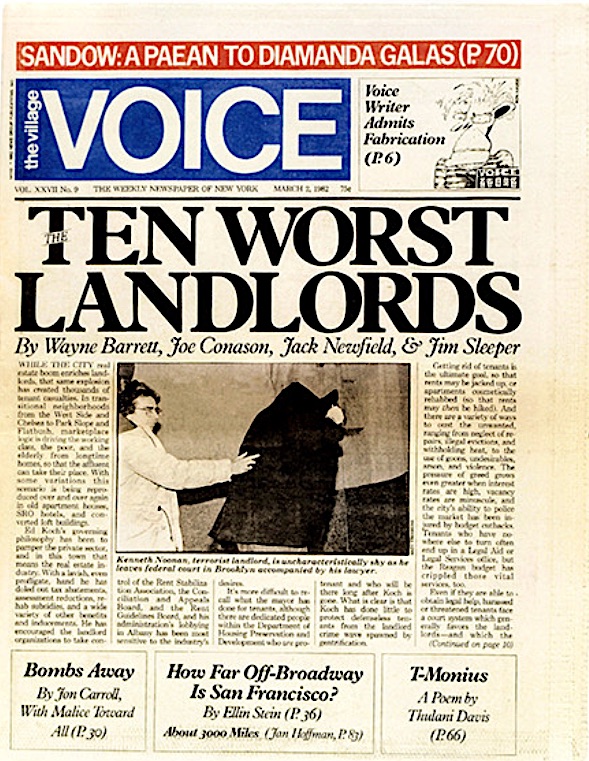
Katie sighed and began to think she
shouldn’t be sharing any more information with
her old friend, at least on this story. Coleman
sensed that in her tone and said, “Well, if it
makes you feel any better, Shui turned out to be
a complete bore. I think he wanted to size me
up, find out what I might write, and, yes, turn
it in his direction.”
“And you agreed to nothing?”
“I agreed only to give his side of his
story. The fact is, Katie, Shui has a long
history of screwing with the Communist Chinese,
and, although he’d say his family were patriots
for saving China’s cultural heritage, the fact
is that they kept the best stuff for themselves.
He’s no angel, but he’s not K.G.B and he never
worked with the Nazis and he never was involved
with the Vegas or Macau mobs.”
“Did you ask him if the Vermeer might
actually belong to his family?”
“Honestly, I didn’t have enough
information to pursue such a line of inquiry. I did
mention that the painting had the word ‘sui’ in
it, and he just said it is a very common name in
China and could mean anything.”
Katie said nothing for a few seconds,
then, “Okay, John. I have to think about us
working together on this from here on in. You
shouldn’t have done it, John.
“Goddamn
it, Katie, the day you prove to me that ever
since the day you became a journalist you never
accepted a donut is the day I’ll get out of the
game entirely. And you know
it’s a game, Katie, and no one has ever gotten
rich playing it.”
Katie knew she couldn’t assure Coleman of
her never taking a swag bag, or, when she was
just starting out and covering an entertainment
story that she hadn’t been on a press junket.
The movie studios ran them all the time, and
journalists who covered the electronics or tech
industries were always being wined and dined in
New York, Miami, Vegas and Silicon Valley
convention halls.
But on a story like this—one with
possible criminal activity involved—she had to
play it straight, and with fewer newspapers and
magazines willing to bankroll investigative
journalism any more, she felt extremely lucky
that McClure’s
still
believed that a reporter had to go where the
story was.
She knew, of
course, her editor Alan Dobell would balk if she
asked to fly to Rio, Amsterdam, Moscow, or any
of the other cities where the billionaire
bidders lived.
But, after Coleman’s admission, she began
to think that it really would be worthwhile to
ask for a trip to Taiwan. After all, Hai Shui
was the only would-be bidder whose family once
owned the Vermeer and lost it.
*
*
*
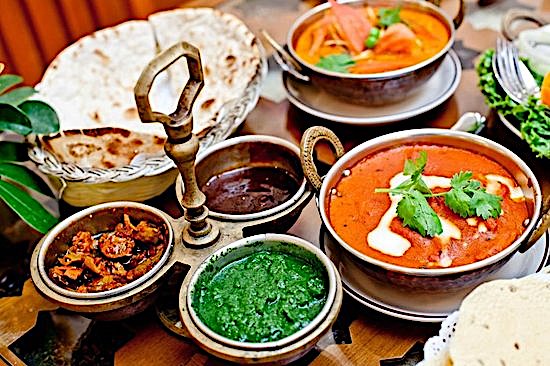 “You like Indian food, David?”
“You like Indian food, David?”
“Hell, yeah. Learned to love it when I
was at a precinct in Queens. They have a big
Indian community there and terrific
restaurants.”
“Okay, how about meeting me at Baluchi’s
in Curry Hill?” Katie said, referring to an East
Side Manhattan neighborhood with a slew of
Indian restaurants. “Seven o’clock?”
“Save me a kabob,” David said, knowing he
sounded like a jerk.
They met and dined lavishly, starting
with appetizers and then spooning food from six
or seven main course dishes, augmented by
saffron rice, chutneys and steaming puffy
breads. They drank Kingfisher beer to cool down
the spiciness of the food.
Katie needed to speak to David about
Coleman’s trip to Taiwan, but David failed to
see what the big deal was.
“It’s not like he’s the first reporter
ever to accept a free meal. He didn’t get any
cash, did he?”
“I really, really doubt it. John’s not
totally corrupt and hardly the first to accept a
trip from a company he’s covering.”
“Well, if it makes you feel any better, I
knew a lot of reporters who were on the take,
mostly entertainment writers, to get a press
agent’s client into print. Gossip column shit.”
“I’m not naïve, but I’ve known John for
so long and he got where he is by being a damn
good reporter. Used to work for U.S. News
& World Report, and he got the job at
Art Today
after doing an exposé in The
Atlantic Monthly on price fixing among art
galleries. But I’m also disappointed that by
trying to get more exposure for Art Today
he’s publishing some pretty sleazy,
unsubstantiated stuff.”
“You mean his profiles of these
billionaires showing them up for what they
really are?
Sounds to me like a service to the
readers.”
“Up to a point, yes,” said Katie, “But
did you see this week’s issue, with the
Danielides profile, saying the guy’s into kinky
sex orgies with gallery owners and contemporary
artists?”
“Can’t say such stuff surprises me about
a young playboy billionaire with his own yacht.”
“Granted, but just reporting what you
just said should have been enough. John was
really exposing the guy’s private life.”
“Now, that sounds like deliberate leaking
by the K.G.B.
The Russians are notorious for using sex
to compromise their enemies.”
“C’mon, David, you’re saying John Coleman
gets phone calls from the K.G.B. about Greek
shipping tycoons?
To what purpose?”
“If you get a leak from the K.G.B, you’ll
never know it was from
the K.G.B, which, by the way, is now called the
F.S.B., but it’s the same guys. They
use intermediaries. But I wasn’t even thinking
of a true K.G.B. plot; I was thinking that our
ex-K.G.B. friend Stepanossky might be behind the
leak.”
“But John’s profile of Stepanossky wasn’t
at all flattering.”
“Tit
for tat, maybe. It seems possible to me.”
© John Mariani, 2016
❖❖❖
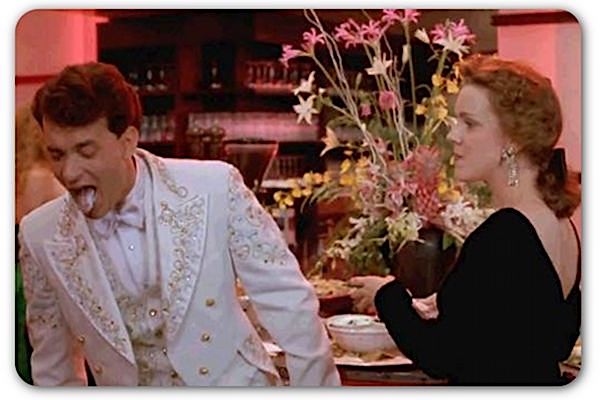
GEE,
HOW COULD HE HAVE MISSED COLLAR STAYS, BLUE
CRAYOLAS, EAR WAX, WD-40, USED BASEBALL CAP,
TIRE TREAD, TYPEWRITER RIBBON, BURNT OUT 75-WATT
LIGHT BULB AND BALLPOINT PEN INK REFILL
CARTRIDGE?
"Bananas
Foster. Over-baked almond shortbread. Chicle. New
suede," he says, using chef words to describe the
rum. "And I can taste it all."—"Chef Richard Blais
on How Rum Is Disrupting Mixology (6/13/22)
❖❖❖
Any of John Mariani's books below may be ordered from amazon.com.
 The Hound in Heaven
(21st Century Lion Books) is a novella, and
for anyone who loves dogs, Christmas, romance,
inspiration, even the supernatural, I hope you'll find
this to be a treasured favorite. The story
concerns how, after a New England teacher, his wife and
their two daughters adopt a stray puppy found in their
barn in northern Maine, their lives seem full of promise.
But when tragedy strikes, their wonderful dog Lazarus and
the spirit of Christmas are the only things that may bring
his master back from the edge of despair.
The Hound in Heaven
(21st Century Lion Books) is a novella, and
for anyone who loves dogs, Christmas, romance,
inspiration, even the supernatural, I hope you'll find
this to be a treasured favorite. The story
concerns how, after a New England teacher, his wife and
their two daughters adopt a stray puppy found in their
barn in northern Maine, their lives seem full of promise.
But when tragedy strikes, their wonderful dog Lazarus and
the spirit of Christmas are the only things that may bring
his master back from the edge of despair. WATCH THE VIDEO!
“What a huge surprise turn this story took! I was completely stunned! I truly enjoyed this book and its message.” – Actress Ali MacGraw
“He had me at Page One. The amount of heart, human insight, soul searching, and deft literary strength that John Mariani pours into this airtight novella is vertigo-inducing. Perhaps ‘wow’ would be the best comment.” – James Dalessandro, author of Bohemian Heart and 1906.
“John Mariani’s Hound in Heaven starts with a well-painted portrayal of an American family, along with the requisite dog. A surprise event flips the action of the novel and captures us for a voyage leading to a hopeful and heart-warming message. A page turning, one sitting read, it’s the perfect antidote for the winter and promotion of holiday celebration.” – Ann Pearlman, author of The Christmas Cookie Club and A Gift for my Sister.
“John Mariani’s concise, achingly beautiful novella pulls a literary rabbit out of a hat – a mash-up of the cosmic and the intimate, the tragic and the heart-warming – a Christmas tale for all ages, and all faiths. Read it to your children, read it to yourself… but read it. Early and often. Highly recommended.” – Jay Bonansinga, New York Times bestselling author of Pinkerton’s War, The Sinking of The Eastland, and The Walking Dead: The Road To Woodbury.
“Amazing things happen when you open your heart to an animal. The Hound in Heaven delivers a powerful story of healing that is forged in the spiritual relationship between a man and his best friend. The book brings a message of hope that can enrich our images of family, love, and loss.” – Dr. Barbara Royal, author of The Royal Treatment.
 |
The Encyclopedia of American Food and Drink by John F. Mariani (Bloomsbury USA, $35) Modesty forbids me to praise my own new book, but let me proudly say that it is an extensive revision of the 4th edition that appeared more than a decade ago, before locavores, molecular cuisine, modernist cuisine, the Food Network and so much more, now included. Word origins have been completely updated, as have per capita consumption and production stats. Most important, for the first time since publication in the 1980s, the book includes more than 100 biographies of Americans who have changed the way we cook, eat and drink -- from Fannie Farmer and Julia Child to Robert Mondavi and Thomas Keller. "This book is amazing! It has entries for everything from `abalone' to `zwieback,' plus more than 500 recipes for classic American dishes and drinks."--Devra First, The Boston Globe. "Much needed in any kitchen library."--Bon Appetit. |
"Eating Italian will never be the same after reading John Mariani's entertaining and savory gastronomical history of the cuisine of Italy and how it won over appetites worldwide. . . . This book is such a tasteful narrative that it will literally make you hungry for Italian food and arouse your appetite for gastronomical history."--Don Oldenburg, USA Today. "Italian
restaurants--some good, some glitzy--far
outnumber their French rivals. Many of
these establishments are zestfully described
in How Italian Food Conquered the World, an
entertaining and fact-filled chronicle by
food-and-wine correspondent John F.
Mariani."--Aram Bakshian Jr., Wall Street
Journal.
"Equal parts
history, sociology, gastronomy, and just
plain fun, How Italian Food Conquered the
World tells the captivating and delicious
story of the (let's face it) everybody's
favorite cuisine with clarity, verve and
more than one surprise."--Colman Andrews,
editorial director of The Daily
Meal.com. "A fantastic and fascinating
read, covering everything from the influence
of Venice's spice trade to the impact of
Italian immigrants in America and the
evolution of alta cucina. This book will
serve as a terrific resource to anyone
interested in the real story of Italian
food."--Mary Ann Esposito, host of PBS-TV's
Ciao
Italia. "John Mariani has written the
definitive history of how Italians won their
way into our hearts, minds, and
stomachs. It's a story of pleasure over
pomp and taste over technique."--Danny Meyer,
owner of NYC restaurants Union Square
Cafe, The Modern, and Maialino.
|
 |
 |
 |
 |
 |
 |
 Everett Potter's Travel Report:
Everett Potter's Travel Report: 
 Eating Las
Vegas
Eating Las
Vegas
MARIANI'S VIRTUAL GOURMET
NEWSLETTER is published weekly. Publisher: John Mariani. Editor: Walter Bagley. Contributing Writers: Christopher
Mariani, Misha Mariani, John A. Curtas, Gerry Dawes, Geoff Kalish.
Contributing
Photographer: Galina Dargery. Technical
Advisor: Gerry
McLoughlin.
If you wish to subscribe to this
newsletter, please click here: http://www.johnmariani.com/subscribe/index.html
© copyright John Mariani 2022
